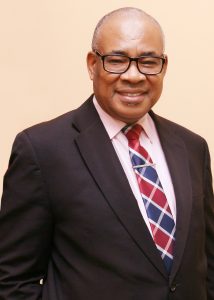
Pastor Austen Ukachi
REVIVAL AND REFORMATION
PENTECOSTAL AND CHARISMATIC REVIVALS IN NIGERIA
Perhaps no single phenomenon has contributed to the growth of the Church in Nigeria like the 20th-century revivals. Between 1914 and the 1990s, no less than six major revivals occurred which impacted the Church in Nigeria in no small measure. This is why some argue that the greatest need of the Church now is for revival and reformation. The past revivals brought growth to the Church but failed to bring about a moral reformation of the society. This was one shortcoming of the past revivals.
The 20th-century revivals gave birth to the Pentecostal and Charismatic movements. Revivals are sovereign acts of God and happen when God chooses to visit His Church with the effusion of the Holy Spirit. They often happen at God’s timing and season. At times, they occur under certain social and economic seasons when men have reached their wits’ end or when society has utterly degenerated into sin. The Charismatic revivals happened against the backdrop of some socio-political uncertainties and disequilibrium in Nigerian society.
The centres of the Pentecostal revivals before the 1970s were localised in the East and West of Nigeria before they spread out, but the Charismatic revivals of the 1970s and 80s were more widespread, covering the entire nation. The Charismatic revival invigorated the mainline, the Catholic, and old Pentecostal Churches; affecting laymen, children, youth, and women. It transformed the spiritual terrain of Nigeria.
In 1914, Sokari Garrick Braide, a catechist in the Anglican Communion, pioneered a healing revival in the Niger Delta area, causing a great awakening and increase in Church growth. Eventually, at his death, the revival gave rise to the Christ Army Church, which flourished in the eastern part of Nigeria. Then, in 1927, a revival called the Spirit Movement broke out among the Annang and Ibibio in present-day Akwa Ibom State. The revival brought increased harvest in the work of the Qua Iboe Mission, culminating in their mission thrust into Igala land in 1934, and two years later, in 1936, into Bassa land.
Then in 1930, another revival fire broke out in Ilesha with Joseph Babalola as the arrowhead of the movement. The Babalola revival was by far the most outstanding in Nigeria’s Church history until the Charismatic revival of the 1970s. It brought a great increase to Christianity and eventually led to the founding of the Christ Apostolic Church. Four years later, in 1934, another Holy Spirit was outpouring among laymen in Old Umuahia, about three kilometres from the present Abia State capital. That led to the founding of the Assemblies of God Church in Nigeria in June 1939.
By February 1948, the spark of the Latter Rain revival started in North Battleford, Saskatchewan in Canada, and by 1953, its blaze had reached Nigeria, causing an awakening in some cities in the West. Ripples of these revivals spread like tidal waves far into different parts of the country, and in some cases extending up to Northern Nigeria.
In most cases, these revivals witnessed a spontaneous outpouring of the Holy Spirit upon people of different social statuses; they were widespread and unconnected to any external influences. In the East and West of the country, the impact of the Charismatic revivals was mainly among the students and the educated elite of the society, but in the North, it was varied, it was among laymen, secondary and post-secondary students and the elites. It resulted in the largest Church growth ever experienced in the history of the Church in Nigeria.
Contact: pastoracukachi@gmail.com




